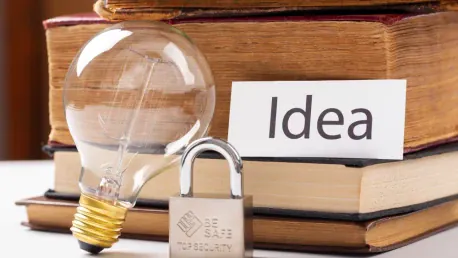One of the earliest concerns with artificial intelligence is the conflict between AI and intellectual property rights. With generative AI, the possibilities for creation are limitless, and initially, a huge concern was whether IP laws can be violated when generative AI applications cannot cite their sources.
Since then, a new issue has come to the fore, spurred by the question: Can an AI system be credited as an IP holder? Separate cases in the US and UK provide interesting, similar outcomes, guidance, and takeaways. Here’s what we know so far about the development of IP with regard to AI.
USPTO Guidance
The US Patent and Trademark Office (USPTO) is leading the charge in the US on the topic of AI and IP. It’s no secret that AI is developing at a pace that far outstrips the legal fraternity’s ability to adjust, but the USPTO is taking strides to mitigate risk.
In February of this year (2024), they published new guidance on patent inventorship analysis for AI-assisted inventions. A statement in the guidance is that “while AI-assisted inventions are not categorically unpatentable, the inventorship analysis should focus on human contributions, as patents function to incentivize and reward human ingenuity.”
The aim of the guidance is to establish whether an application provided a “significant contribution” to the invention, while making use of AI during the process. The guidance is not a legally binding document, but provides a framework for inventors, patent law professionals, and other stakeholders regarding the USPTO’s considerations for AI-driven patent applications.
The Guidance
The USPTO is clear on the fact that patent applications that disclose AI use are not immediately disregarded. Put another way, there’s room for inventors to use artificial intelligence systems during the process. What is key, is determining just how much human input was included in the invention.
It refers to case law to establish a definition and boundaries on what is considered “significant contribution”. With reference to Pannu v. Iolab Corp., several factors are looked at when assessing human inventorship. To comply, an inventor must:
(1) contribute in some significant manner to the conception or reduction to practice of the invention,
(2) make a contribution to the claimed invention that is not insignificant in quality when that contribution is measured against the dimension of the entire invention, and
(3) do more than merely explain to the real inventors’ well-known concepts and the current state of the art.
According to the guidance, a natural person who utilizes AI assistance in the inventive process must meet the significant contribution standards specified by Pannu. In other words, a human inventor must have significantly contributed to each claim in the patent.
In the case of a patent claim that involves more than one person and the assistance of AI, each person must have contributed significantly. The guidance recommends that “applicants should take extra care.”
As such, in an application involving one or more human inventors assisted by artificial intelligence, the Pannu factors must be applied to each claim to ensure that each one of the human inventors made a significant contribution to each. The guidance cautions that “applicants should take extra care” to make sure of this “given the increasing use of AI systems in the invention-creation process.”
The USPTO sets forth five guiding principles to assist applicants in determining whether an inventor’s contribution was significant:
First, using AI does not negate a person’s contributions as an inventor. This means that the mere use of AI in the invention process does not automatically preclude patent protection.
Second, merely presenting a problem to an AI system is generally not enough for a natural person to be considered the “inventor” of the output. However, a significant contribution can be found in the prompt construction process, particularly where the person constructs the prompt given a specific problem to elicit a particular solution from the AI system.
Notably, this differs from the Copyright Office’s position that a natural person’s entry of prompts into an AI system, even if the prompts are themselves creative and honed through an iterative process, is generally insufficient creative work for the natural person to claim they are the author of the generated output.
Third, the mere reduction of an invention to practice is not a significant contribution that rises to the level of inventorship. As such, one cannot simply take the output of an AI system, the utility of which is apparent to those of ordinary skill in the art, and claim inventorship. However, a person can be a proper inventor if they significantly contribute to an AI system’s output to create an invention.
Fourth, a person who develops “an essential building block from which the claimed invention is derived” may have provided a “significant contribution” even if they do not participate in each step of the invention. As such, one who builds an AI system for a specific purpose can be considered the inventor of the output that results from applying the system to that purpose, where the designing, building, or training of the AI system is a significant contribution to the invention created with the AI system.
Fifth, merely owning or overseeing an AI system does not qualify a person as an inventor unless they also made a significant contribution to the invention’s conception. This principle clarifies that a person’s mere ownership or development of an AI system used in creating an invention does not make that person an inventor.
The thread running through all these principles is the requirement for the human inventor’s active participation, which is distinguishable from the operation of the AI system.
UK Supreme Court Decision on Whether an AI System Can Be an Inventor
The UK Supreme Court has also, in recent history, grappled with the question of AI use in the invention process. Their case law is derived from Thaler v Comptroller-General of Patents, Designs and Trademarks [2023] UKSC 49.
In this case, Dr. Stephen Thaler was seeking to attribute two inventions to DABUS (Device for the Autonomous Bootstrapping of Unified Sentience), an AI system he created. He has been unsuccessful in several attempts to register DABUS as a patent holder, including in the US, Europe, and Australia.
His petitions in the UK date back to 2018 when he filed a patent application on behalf of DABUS for the invention of a food and beverage container and an emergency light. Dr. Thaler’s application states that no human (or “natural person”) was involved in the invention of these products, but believed he was entitled to patent protection as the owner of the AI machine.
In the UK, several courts and offices (the UK Intellectual Property Office, the Patents Court and the Court of Appeals) rejected Dr. Thaler’s application for the same reason: A natural person had not been named as the inventor.
This is a key requirement under the UK Patents Act 1977. In essence, the claim didn’t even pass the first milestone, which would have established grounds for the right to apply.
The Supreme Court agreed with the rejection of the various courts and offices, stating that numerous sections of the Patents Act 1977 clearly state that an inventor must be a natural person, and since DABUS was a machine, it could not be the inventor. The court acknowledged that the result might have been different if Dr. Thaler had used DABUS as a “highly sophisticated tool” to enhance his own work.
The court also rejected Dr. Thaler’s theory that the inventions were “the fruits of” the DABUS machine and that since he developed DABUS, he was entitled to ownership under the doctrine of accession.
Conclusion
While the USPTO has acknowledged that it expects AI usage to play an increased role in the inventive process, it has made clear that inventorship will continue to focus on substantial contributions by natural persons in the US. The decision by the UK Supreme Court in Thaler highlights that, for now, other countries are taking a similar approach.
Applying the Pannu factors in conjunction with the AI-specific principles laid out in the USPTO guidance gives inventors and practitioners a solid framework against which they can measure inventor contribution. However, the analysis will be done on a case-by-case and claim-by-claim basis in patent examination or litigation.
Even with this guidance, disputes are expected about whether there was sufficient human contribution when an AI system was used in connection with the invention process.









